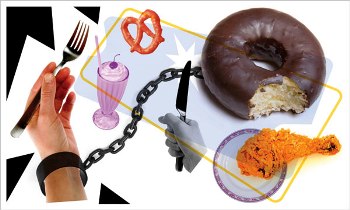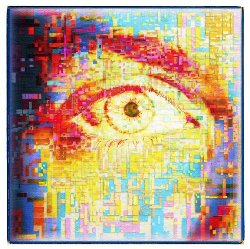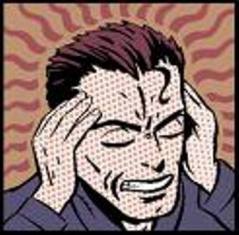The Anti Prevention Nation© Volume VII - Averting Binging & Overeating Through Distraction

Every Waking Moment
One of the main reasons why I spent so many years in obesity and toxicity, I realize today, is because food and eating occupied most of my waking thoughts. It was all about “when do I eat? what will I eat?“
Most – if not all - of my activities were surrounded by food and plans for eating. I could not even pump gas in my car without ending up inside the station’s convenience store hovering over the pastry section like a desperate bird of prey. Donut and pizza shops spoke to me “audibly.” He-he. Well, not really – but you get that point.
In short, it got to the point where food and eating defined me and was the most important thing in my life. I talked about food, thought about food and envisioned food, food and more food. Every problem, circumstance or unpleasant emotion could be easily cured by a pizza, donut or other toxic food.
This may sound like an extreme case, but such was my plight for nearly 15 years. If you are more than twenty pounds overweight, then perhaps you may have some variation of this behavior. I hope that with these articles I can encourage you and motivate you to break eating habits that harm you.
You Reap What You Sow
We have seen in other ezines how changing the way we think is one of the most important parts of any transformation process. In short, the message that we have been discussing is that: What You Think Becomes What You Do, and What You Do Becomes Who You Are.
This truth has been documented many times throughout history. “You Reap What You Sow,” the Holy Scriptures say, and the Law of Karma in Eastern religions speaks similarly. The fact that I thought mostly of food, then ate too much, and then became obese showed me the truth of these ancient principles.
So then, what could I do?

Distraction Visioning
I knew that if I wanted to find freedom from such a terrible food addiction, then I was going to have to redefine who I was and what I did. This was when I started to practice what I have come to call Distraction Visioning.
I had, in essence, been re-affirming a “false identity” that was designed – by all of my childhood memories - to lead me to overeating each and every time. In my case it was overeating, but this pattern is also similar for some persons addicted to drugs, alcohol and gambling, for example.
For me, no matter what happened or how I felt, the solution and scapegoat was always the same: food. This realization marked a real turning point for me because the lie and folly of my assumed identity became clear.
Active Distraction
The first type of “distraction” is based on new activities you can start to take part of that do not include food and eating. Do this: sit down in your office or kitchen table with a notebook and pen. Make a pie chart and write on it what you enjoy (or would enjoy doing) besides eating.
These can include very simple activities as: playing with your children, going to the movies, swimming, reading a book, going to the mall and window shopping, praying etc…
Write down things that you already do as well as things that you “would like to start doing.“ Do not hurry this process. Be gut wrenching honest with yourself and make sure that the list you come up with is real and realistic. Then, once you have completed the compilation, it is time to put it to practice.
* When the old feeling of eating and binging comes up, immediately go to the list and DO one of the things that you have jotted down. Make sure that you have things in the list that you can do immediately. Delay the trip to the refrigerator and instead direct all of your attention to the activity that you have chosen.
* Spend at the very least a half-hour in the activity. In my particular case, walking twice around the block did the trick. You will find that once you are done, not only did you not eat during that time, but in the majority of cases the “voracity” to raid the refrigerator or go out for fast food will have diminished or even gone away all together.
If it has not, then continue with the activity. Do not, however, do the activity yet be focusing all of your mind energy on that juicy cheeseburger you want to devour. This would be self deception. The correct way to use the distraction is to redirect all of your focus, thoughts and attention into what you are doing. Bring emotion to it.
Pay Attention
If you are outside, start to pay close attention to the clouds, birds or vegetation – for example. This will take some practice, but I strongly encourage you to develop this mental tool.
It will prove invaluable as you continue to work on losing weight and getting healthier.
Most people then tell me: “Well that is too simplistic! My eating problems are way too strong and this solution is petty and silly.”
“Yes, I tell them. But have you honestly tried it with all of your heart? More than once? ” Nine times out of then there is either no response or the person admits they have done it “half-heartedly” without any true desire for change.
This type of distraction is actually very powerful and gives your brain a totally new paradigm to follow when hunger strikes at “off hours.”
When I say “off hours” I am referring to those times in which I know that eating is not the way to go like, for example, between meals or when I am fasting or amidst a CLEANSING DIET.

Abstract Distraction
Another “distraction” technique that has worked wonders for me is to focus my mind on something abstract, or something I want to do or accomplish.
When the desire to binge, overeat, nibble or simply eat at “off hours” strikes, it is imperative to take immediate action to disrupt the thinking pattern.
Often this desire may come at times when some type of active distraction is not possible. A good example – and it happened to me many times – is at 3 AM when time and again I would abruptly awake with a blinding obsession to eat, eat and eat.
At this hour, walking around the block or going shopping is not usually at hand.
So, what can one do?
Abstract distraction is the practice of swiftly using your “imaging” power to cut off the eating pattern. It is, to some extent, a form of daydreaming.
One vision that works for me is to see myself lean and wearing the types of clothing – and sizes – that I always wanted to.
Another one is seeing myself doing activities I dreamed of doing like, for example, rock climbing, scuba diving and completing a triathlon.
The result, if done properly, is that within approximately ten minutes, the hunger starts to abate and I can go back to bed without gorging and then waking up feeling groggy, depressed and full of remorse.
I tell you, this may sound totally “cheesy” and silly, but it works!!!!!!
Sit down and think of a list of things you want to do or accomplish with your body and health. Some ideas are:
• The Size of Clothing you want to fit in. What style or size have you always wanted to fit into? How does it feel to wear that size? How do you look? How do your friends and family react when they see you in such good shape? These are all elements of the imaging that are important to develop.
• An Activity (Athletic or Social) You Want To Take Part Of that, due to being overweight, you have either shunned or not done. Going to the beach and actually taking off my shirt was one I used – I was very ashamed of my body and was always hiding in large and black-colored clothing. Another one could be feeling confident in a crowd rather than ashamed because of excess weight, as I often was.
How do you feel taking part of these activities? How do you look? How are others reacting to your new and healthier physique? Do you feel secure? Sexy? Dynamic and assertive? Go all out and really give the vision life. Don’t hold back.
• The Feeling of Accomplishment and Pride You Will Feel “the next day” when you realize you did not succumb to the obsession to overeat, or eat the wrong types of foods. How does it feel you know you did not eat that pizza or box of donuts? How great is it to confront your “sweet tooth” and not let it dominate you? How does your stomach feel? You feel lighter and hopeful, right?
• Knowing That You Are Going To Be Healthier For Your Loved Ones(children, spouse, siblings etc…). Imagine being lean and healthy and, consequently, having many more years of health and life to share with the people that you love. Taking part in many different activities with them that A You currently "don't feel like it" (apathy, sloth, shame) or B You Simply Don't Have The Physical Energy. (Intestinal, Body-wide Toxicity)
This list should be tailored to YOU specifically. Take your time and do the work. Make sure the list and corresponding images are as extensive, detailed and clear as possible.

The Mental Barrier
Again, some people tell me: “This stuff about imagining is stupid and it doesn’t work. It is a superficial patch to binging and overeating, which is a deep-rooted illness and disorder.”
My reply is: “Yes, binging and compulsive overeating – and obesity – are terrible conditions and I have suffered from them ALL myself. It certainly is not my intention to minimize their seriousness … but have you tried the imaging? Have you done it more than once? Have you taken the time to develop this mental discipline? Have you put aside ALL of your pre-conceived notions and simply done it?”
In many cases, the reason why these weapons do not work is because of mental laziness – yet another problem that many overweight persons often face, including myself.
Why? Because obesity and toxicity are not just about the body. They feed A LOT from the mind. That is why it is so crucial to know how to use The Mind and be prepared to take whatever steps are required to the changes we want in our lives. Again, the change HAS to come From The Inside Out.
In other words, when the internal change is made, then that change reflects on the outside. Trying to change externals without internal change is folly and does not work. Lord knows, I tried it for many years!
Desire
If you want something bad enough, then chances are very good that you will attain it. But if you think negatively (that you’re too heavy, that you’ll never make it … why bother? what’s the use?) then surely you will become stuck in apathy and hopelessness as I did. Since I had no other tools at hand, these emotions always led to eating in excess.
As we have seen in previous ezines, we must be prepared to assault the mind with not only new thoughts, but with powerful, positive visions of what we want to be and accomplish. When it comes to binging and overeating, “Distraction Visioning” is one tool that has helped me to avert disaster many, many times. I use it pretty much on a daily basis.
But the impact of imaging is far from unique. I have heard of people with high blood pressure calming themselves by thinking peaceful thoughts live a vacation in Hawaii. Cases have also been documented of cancer patients undergoing chemotherapy who have received healing by envisioning the diseased cells being destroyed by the radiation.
So, what is the message in all of this? Dive in the mud! Do what it takes! Get mad ! Resolve that you will do what it takes to start to transcend obesity – using every weapon at your disposal to create the life you so want and deserve.
It is not easy… there are no magic solutions; but if you follow the steps we have and will continue to outline, you will start piling up a very efficient arsenal of tools and techniques to counteract that terrible monster of binging, obesity and compulsive overeating. You can do it! And you are worth it!
Next Up:
See you In 14 Days!
All the very Best,
Robert Dave Johnston
Fitness Through Fasting – Editor
Lauren E. Porter RN/ASN- Medical Consultant
Volume I Eyes Wide Shut – Mouth Wide Open. The Obesity Epidemic. Volume II Volume III Volume IV Volume V Volume VI
Fix me Quick Doctor! Dinner's 'a Waitin'! Weight Loss & Personal Responsibility. True Life Stories.
Food Addictions & The Phenomena of Craving.
You Are What You Eat.
The Inactivity & Starch Trap – Food Combinations.
Binging & The Delusion of Fear. How Our Brains Work Part 1.

